OpenAI just dropped Sora AI 2, and creators everywhere are asking: what actually changed?
This comparison breaks down the real differences between Sora AI 2 vs Sora AI for content creators, filmmakers, and anyone curious about OpenAI’s latest video generation upgrade. You’ll discover what new features make Sora AI 2 stand out and whether the improvements justify switching your workflow.
We’ll explore the core technical improvements that boost video quality and realism, examine the enhanced production capabilities alongside current limitations, and dive into the updated safety features and content governance. Plus, you’ll learn about access changes and how these OpenAI Sora AI updates impact your ability to create AI-generated videos right now.
Core Technical Improvements in Sora 2

Enhanced Video Realism and Physics Accuracy
Sora AI 2 delivers dramatically improved world simulation capabilities that represent a significant leap forward in AI video generation technology. The enhanced physics accuracy now respects object permanence and natural motion dynamics far better than its predecessor. Complex movements like Olympic gymnastics routines and backflips are modeled with remarkable believability, showcasing the system’s sophisticated understanding of human biomechanics and spatial relationships.
The improved physics engine incorporates impact dynamics and realistic object interactions. When generating scenes involving basketballs, the AI now accurately simulates rebounding effects off surfaces, complete with appropriate sound effects like thuds and rattles. This attention to physical detail extends to various scenarios, ensuring that objects behave according to natural laws rather than floating or disappearing unnaturally.
Visual artifacts that plagued earlier versions have been significantly reduced, with more natural movement patterns and enhanced stability throughout video sequences. The system now better understands temporal consistency, reducing issues like disappearing limbs or flickering that previously compromised the viewing experience.
Synchronized Audio Generation with Dialogue and Sound Effects
One of Sora AI 2’s most groundbreaking features is its integrated audiovisual modeling capability. The system generates synchronized audio that includes dialogue, sound effects, and ambient sounds perfectly aligned with the visual content. Characters’ lip movements now synchronize naturally with generated speech, creating a seamless viewing experience that rivals traditional video production.
The audio generation extends beyond simple dialogue to include contextual sound effects that match on-screen actions. Crashing waves produce authentic oceanic sounds, while spoken dialogue maintains proper timing and intonation. This spatial audio logic ensures that sounds originate from appropriate screen positions – if a car moves across the frame, its engine sound shifts accordingly, creating immersive three-dimensional audio experiences.
The few-shot learning capabilities enable the system to mimic specific voices and scenes from minimal data samples, powering advanced features like character consistency across different scenes and environments.
Improved Multi-Shot Continuity and Character Consistency
Sora AI 2 addresses one of the most significant limitations of its predecessor through enhanced long-context capabilities. The expanded memory window allows the system to “remember” previous shots, maintaining character appearances, environmental details, and narrative elements across multiple scenes. This represents a fundamental shift from treating individual frames as isolated images to understanding sequential storytelling.
The cinematography learning component, trained on millions of film clips, enables natural shot transitions including pan-to-zoom movements and seamless cuts between close-up and wide shots. Character persistence across scenes ensures that the same chef’s apron and kitchen background remain consistent when switching between detailed cooking shots and broader kitchen views.
This multi-shot coherence extends to complex narrative sequences, where characters maintain their appearance, clothing, and environmental context throughout extended video segments, creating professional-quality continuity previously impossible in AI-generated content.
Better Instruction-Following and Control Capabilities
The enhanced prompt control system now processes intricate, multi-part instructions with remarkable accuracy. Creators can provide detailed cinematographic parameters including specific lens types, shutter speeds, and color grading preferences, with the AI faithfully interpreting and implementing these technical specifications.
Through instruction tuning and preference alignment borrowed from advanced language model training, Sora AI 2 learns from director-like scripts and receives feedback on visual quality and narrative coherence. This means the system actually follows framing instructions precisely rather than making approximate interpretations.
The physics correction loop employs a sophisticated “referee model” that identifies and corrects errors like floating objects or unnatural movements during the generation process. This feedback mechanism ensures that generated content adheres to realistic physical laws and natural motion patterns, significantly improving the overall quality and believability of the final output.
Production Capabilities and Limitations

Duration and Resolution Constraints Remain at 20 Seconds and 1080p
Despite significant technical improvements in Sora AI 2, the fundamental production limitations remain unchanged from the original version. Videos are still capped at a maximum duration of 20 seconds while maintaining visual quality and adherence to prompts. The resolution constraint also persists at 1080p for standard users, though Pro subscribers ($200/month) can access slightly higher resolution output around 2K.
These limitations reflect the computational demands of AI video generation, where longer durations and higher resolutions exponentially increase processing costs. The 20-second limit forces creators to be strategic with their content planning, requiring multiple generations and careful stitching for longer narratives. Pro users do receive marginally longer video capabilities of up to 15 seconds compared to the 10-second limit for free users, but even the premium tier doesn’t break the fundamental 20-second barrier.
Native Audio Integration for Social Media Content Creation
While the reference content doesn’t explicitly detail native audio capabilities in Sora AI 2, the platform’s positioning as a TikTok competitor suggests enhanced social media optimization features. The video generation process now considers the social media landscape more comprehensively, with creators actively sharing Sora-generated content across platforms like TikTok.
The Featured Feed functionality demonstrates OpenAI’s commitment to social content discovery, featuring the best examples of creative video generation to inspire users. This community-driven approach mirrors successful social media platforms and indicates that Sora AI 2 is designed with viral content creation in mind.
Cameo and Likeness Features with Consent Controls
Sora AI 2 implements strict consent controls for cameo and likeness features, representing a significant shift from earlier versions. The platform now requires express written consent for uploading images or videos of other individuals, as outlined in their Upload terms agreements. Users may only upload content they own or have necessary rights to use.
The system has implemented robust content governance around celebrity and public figure likenesses. Most celebrity-based videos currently circulating on TikTok were created before OpenAI’s crackdown on intellectual property content. The platform now makes it nearly impossible to generate videos featuring celebrities or copyrighted characters, with some exceptions for deceased individuals who passed away long ago.
This represents a dramatic change from unlimited celebrity generation capabilities, with the system now blocking content that resembles third-party intellectual property. The threshold for these blocks has been set quite low, resulting in frequent false positives even for generic prompts.
Enhanced Camera Control and Scene Planning Tools
The Sora Video Editor introduces sophisticated scene planning capabilities through its Storyboard feature. This tool enables creators to construct videos by selecting individual frames at specific timestamps, providing granular control over narrative flow. Users can upload videos, images, or use text descriptions for each storyboard card, then drag these elements along a timeline to control pacing.
The system includes several advanced editing tools:
- Re-cut: Trim and extend videos in new storyboards
- Remix: Describe changes and create new variations
- Blend: Transition elements between different videos
- Loop: Create seamless loops from any video segment
Camera control extends to aspect ratio selection, resolution settings, and duration parameters, all adjustable before generation. The timeline interface allows creators to leave strategic spacing between cards, as closer positioning increases the likelihood of hard cuts rather than smooth transitions. This level of control represents a significant upgrade from simple text-to-video generation, enabling more professional video production workflows.
The platform also supports multiple variations per generation, allowing users to compare different interpretations of their prompts before selecting the best result for further editing.
Safety and Content Governance Updates
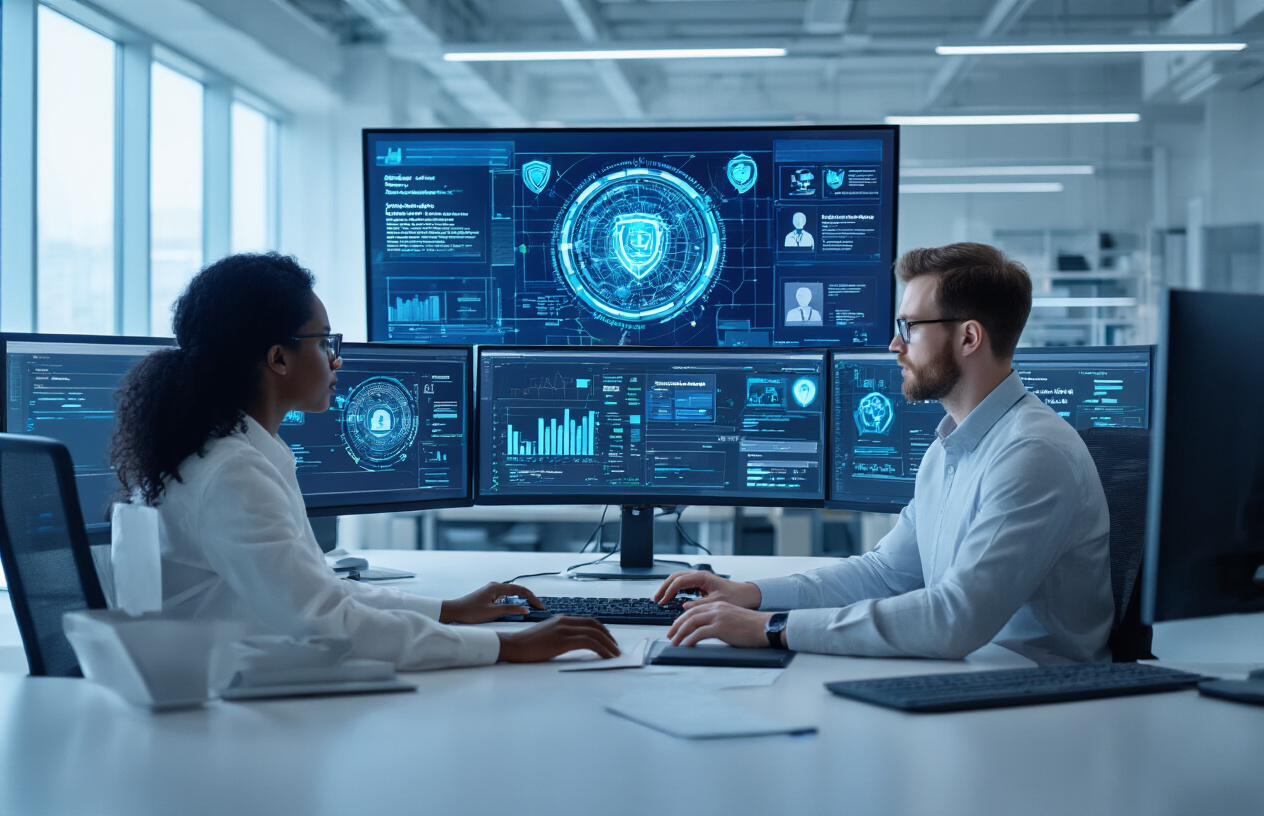
Expanded Multimodal Content Moderation Systems
Sora AI 2 introduces sophisticated layered defense mechanisms that represent a significant leap forward in AI video generation safety. The system employs comprehensive filtering that examines multiple dimensions of content simultaneously, checking both text prompts and video outputs across multiple frames while also analyzing audio transcripts. This multimodal approach ensures that harmful content is intercepted at various stages of the generation process, creating multiple barriers against unsafe material.
The enhanced moderation framework specifically targets sexual material, terrorist propaganda, and self-harm promotion through automated systems that continuously scan all feed content against OpenAI’s Global Usage Policies. These systems undergo regular updates as new risks emerge and are supplemented by human review processes focused on addressing the highest-impact potential harms.
Stricter Protections for Minors and Public Figures
With safety considerations at the forefront, Sora AI 2 implements robust protections specifically designed for younger users. The platform includes enhanced safeguards for teens, featuring limitations on mature content output and feed curation designed to be age-appropriate. Teen profiles are not recommended to adult users, and adults cannot initiate direct messages with teenage accounts.
The system also incorporates measures to block unauthorized depictions of public figures, except when using the approved cameos feature. New parental controls integrated with ChatGPT allow parents to manage whether teens can send and receive direct messages and select non-personalized feeds within the Sora app. Additionally, teenage users have default limitations on continuous scrolling to promote healthier usage patterns.
Enhanced Provenance Signals and Watermarking Technology
Every video generated through Sora AI 2 includes both visible and invisible provenance signals, marking a substantial advancement in AI content identification. At launch, all outputs carry visible watermarks, while every Sora video also embeds C2PA metadata—an industry-standard digital signature that provides verifiable content authenticity information.
OpenAI maintains sophisticated internal reverse-image and audio search tools capable of tracing videos back to Sora with high accuracy. This comprehensive tracking system builds upon successful implementations from ChatGPT image generation and the original Sora AI, ensuring robust content accountability and origin verification.
Comprehensive Usage Policies and Enforcement Guidelines
The platform establishes clear recourse mechanisms and user control features that empower creators while maintaining safety standards. Users maintain complete control over when and how to share their videos, with the ability to remove published content at any time. Videos are only shared to the public feed when users explicitly choose to do so.
Every video, profile, and comment can be reported for policy violations, with transparent enforcement processes when violations occur. Users can block accounts at any time, preventing others from viewing their profiles or contacting them via direct messages. The consent-based likeness system ensures users maintain end-to-end control over their digital representation, with the ability to revoke access to their cameos at any time and review all videos featuring their likeness, including drafts created by other users.
Access and Availability Changes

New iOS App and Web Platform Distribution
The Sora AI 2 release date marked a significant shift in OpenAI’s distribution strategy, with the platform becoming available through dedicated mobile and web applications. The primary access point for Sora AI 2 is through the iOS app, searchable as “Sora by OpenAI” on the App Store. This mobile-first approach represents a major departure from the original Sora AI’s limited availability, making AI video generation improvements more accessible to content creators.
The iOS application serves as the flagship platform for Sora AI 2, featuring exclusive capabilities like Cameo and Remix that aren’t available through other channels. These features showcase the Sora AI 2 new features that distinguish it from its predecessor, allowing users to insert selfie videos into AI-generated scenes and create multi-shot videos with consistent character details.
Alongside the mobile app, OpenAI launched a web version of Sora AI 2, though this platform lacks some of the social features available in the iOS application. The web interface provides basic video generation capabilities but doesn’t offer the full suite of interactive features that make the mobile experience compelling for AI video creation tools comparison.
Unfortunately, Android users face a significant limitation as Android support remains in development without a confirmed release date. This platform gap affects a substantial portion of potential users who rely on Android devices for content creation workflows.
Invite-Only Rollout Strategy and Regional Limitations
Now that we have covered the platform distribution, the access model reveals OpenAI’s cautious approach to scaling OpenAI Sora AI updates. Sora AI 2 operates on an exclusive invite-only system, whether accessed through the iOS app or web version. This controlled rollout uses a “1 invites 4” model, where each approved user receives four invite codes to distribute within their network.
The invite system has created both organic community growth and unintended consequences. While designed to foster gradual expansion, the scarcity has led to a secondary market where invite codes sell for up to $175 on platforms like eBay. OpenAI has actively banned the selling of invites in official channels like their Discord server, though underground markets persist.
Geographic availability presents another significant barrier, with Sora AI 2 currently limited to the United States and Canada. This regional restriction affects global content creators seeking to leverage the AI filmmaking tools 2024 capabilities. OpenAI has indicated that other regions will “open gradually,” but specific expansion timelines remain undisclosed, with industry insiders expecting rollouts every few weeks.
Users can join the official waitlist through sora.com, follow OpenAI’s social channels for contest opportunities, or connect with existing users for legitimate invite codes. The company warns against “Sora 2 code generators” and crack tools, which violate terms of service.
Integration with ChatGPT Plus and Pro Subscription Tiers
With this in mind, the subscription integration represents a strategic alignment within OpenAI’s ecosystem. While the reference content doesn’t specify exact subscription tier requirements, the invite-only system suggests integration with existing OpenAI subscription models. The controlled access approach indicates that Sora AI 2 availability may eventually align with premium subscription tiers, following OpenAI’s established pattern with other advanced features.
The platform’s positioning within OpenAI’s broader OpenAI video generator upgrade strategy suggests that future access may be tied to ChatGPT Plus or Pro subscriptions, providing existing subscribers with priority access or exclusive features. This integration would create a comprehensive content creation suite combining text, image, and video generation capabilities.
No Public API Access Currently Available
Previously, developers eagerly anticipated API integration for third-party applications. Currently, Sora AI 2 lacks public API access, limiting integration possibilities for external development teams and Sora AI content creation capabilities within existing workflows. However, OpenAI has announced that developers will receive API access “in the coming weeks,” suggesting that programmatic integration is planned for the near future.
This API development will enable third-party tools to integrate Sora AI 2’s video generation capabilities, potentially expanding the platform’s reach beyond direct consumer applications. The promised API access represents a crucial development for businesses and developers seeking to incorporate AI video creation tools comparison features into their existing platforms and workflows.
The absence of immediate API access reflects OpenAI’s measured approach to scaling, prioritizing platform stability and content governance before opening broader integration channels.
Impact on Content Creators and Entertainment Industry
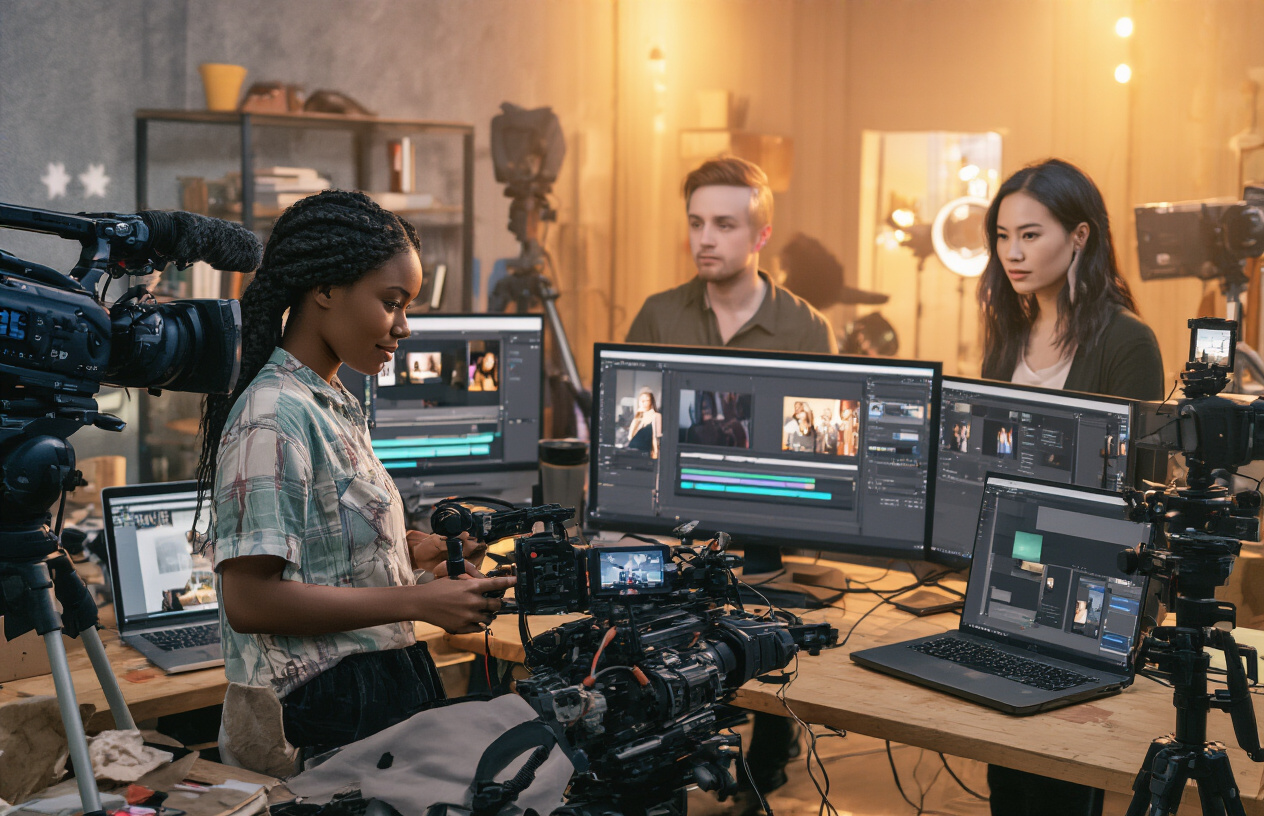
Disruption to Traditional Video Production Workflows
Sora AI 2 represents a fundamental shift in video production capabilities, collapsing traditional barriers of cost and geography that have long defined the entertainment industry. The technology enables anyone to produce studio-quality audiovisual content from a simple prompt, marking what venture capitalist Erik Hammer describes as a disruption “on par, or even more impactful” than the transition from painting to photography, or live theater to film.
This transformation manifests in two distinct ways within the creative process. First, AI serves as an enablement tool, giving creators and IP owners expanded capabilities beyond their previous limitations. Second, it functions as an entirely new production medium, fundamentally altering how content is conceived and created. The shift moves the primary constraint among creators from resources to ideas, as funding and equipment limitations become increasingly irrelevant.
Increased Competition for Audience Attention on Social Media
With AI-generated content already constituting 71% of social media material according to Forbes, comedians and content creators face unprecedented competition for viewer attention. The introduction of Sora AI 2 adds another layer to this challenge, creating what industry experts describe as an “algorithmic sea” where visibility becomes increasingly difficult to achieve.
The competition operates on a zero-sum basis within the 24-hour day constraint. As one industry analyst notes, “if there are 11 million views on whatever Twitter video that was AI generated, those are 11 million impressions that could have gone to Shane Gillis.” This redistribution of attention affects both emerging comics struggling to build fan bases and established performers with existing audiences.
The saturation particularly impacts traditional promotional strategies. Where comedians once relied on television appearances like Tonight Show spots to boost awareness, they now depend heavily on short-form video discovery through platforms like TikTok, Instagram Reels, and YouTube Shorts. The flood of AI-generated content makes cutting through this noise increasingly challenging, potentially affecting ticket sales and tour promotion.
New Marketing Opportunities and Direct Fan Engagement Tools
Now that we’ve covered the competitive challenges, the landscape also presents new marketing opportunities for savvy creators. Many comedians are exploring ways to leverage AI platforms for creating compelling promotional videos they couldn’t previously afford to produce. Some are experimenting with Sora 2’s cameo feature, which allows users to create clips around synthetic versions of themselves.
Comedian Ian Edwards exemplifies this adaptive approach: “I feel like every time I’ve tried to say, from the beginning of social media, ‘Nah, I’m not going to get Facebook; I got a MySpace. Nah, I’m not going to get on Instagram; I got a Facebook,’ it’s only hurt me, delaying the process. So I’ve been messing around with it. I made some Sora videos today.”
The changing landscape is driving creators toward more direct fan engagement strategies. Industry professionals increasingly recommend that comedians build stronger foundations through email lists, text lists, and proprietary websites with robust analytics. As one manager explains, “Social media analytics only go so far, and understanding where your audience is clicking in from, whether it’s to sign up for your email list or to buy a ticket, is crucial.”
Platforms like Punchup Live and Lizrd Mail are emerging as alternatives that allow comedians to engage more directly with fans outside traditional social media constraints. These tools address the frustration many creators feel with mainstream platforms, where algorithm changes and limited organic reach make meaningful fan connection increasingly difficult.
Economic Implications for Comedians and Live Performance Artists
The economic impact of AI-generated content extends beyond simple competition for eyeballs. For comedians who haven’t yet built solid fan bases, the challenge of cutting through noise becomes economically significant, as social media serves as their primary marketing funnel for live performances and tour promotion.
The timing compounds existing economic pressures in the comedy industry. Representatives note it’s already becoming harder to sell tickets despite consistent social promotion, as economic uncertainty makes consumers more cautious with entertainment spending. This follows a post-COVID correction in the live entertainment space, making the comedy business particularly vulnerable to additional disruptions.
However, industry experts suggest that live comedy experiences may actually benefit from increased demand as audiences seek authentic human connection amid the AI saturation. There’s likely to be a premium placed on live experiences, similar to the embrace of in-person events when pandemic restrictions lifted.
The key economic strategy emerging involves building more direct relationships with fans who demonstrate commitment by attending live shows. As comedian Liz Miele emphasizes, “in this economy, if somebody f*cking buys a ticket, puts on pants, leaves their house, comes and sees you… you need to stay connected with them.” This approach recognizes that people willing to attend live performances represent “a special breed” worth nurturing through direct engagement rather than relying solely on social media algorithms.
Workflow Integration and Best Practices
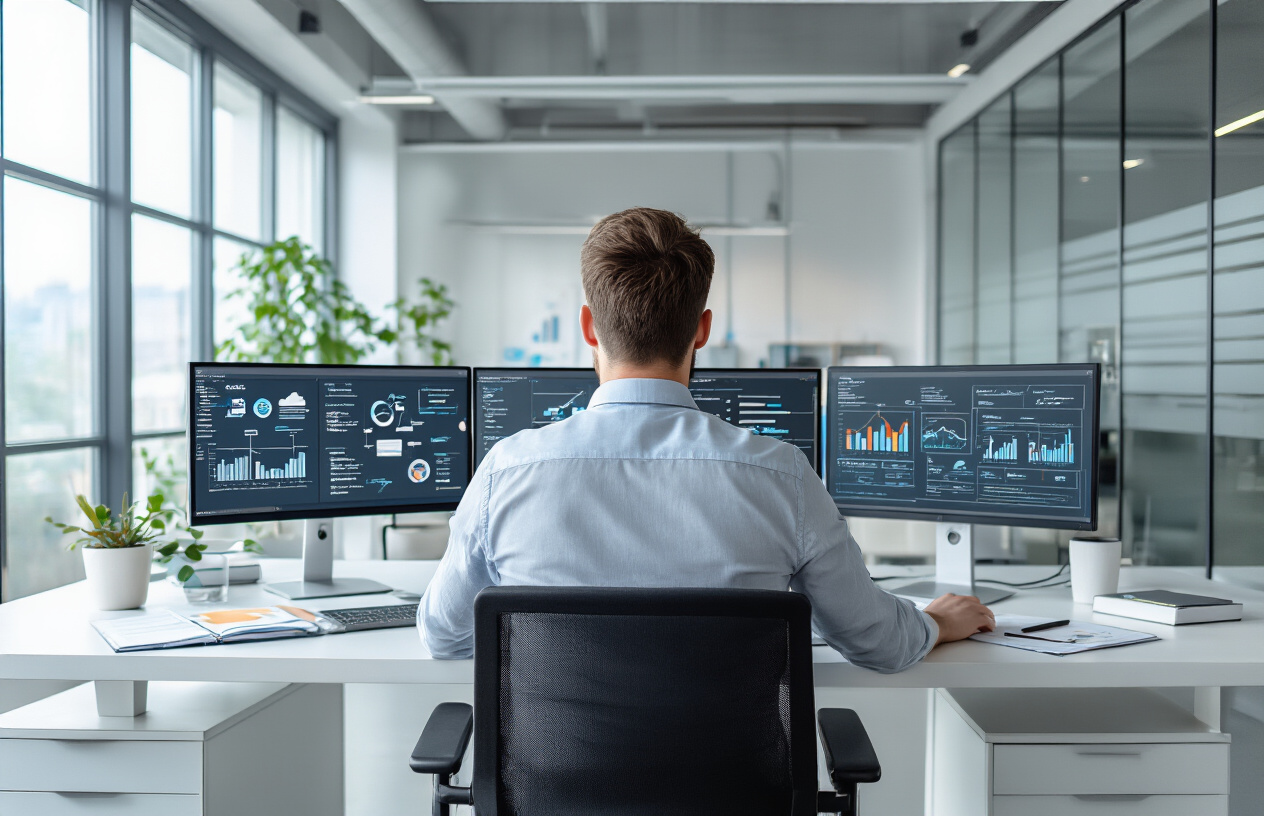
Optimal Use Cases for Sora 2 vs Traditional Production Methods
Sora 2 excels in specific scenarios where traditional production methods would be cost-prohibitive or logistically challenging. The tool demonstrates particular strength in creating social and marketing clips, quick ideation, and transforming text concepts into video rapidly. For lifestyle b-roll content, teams report acceptance rates of 2-4 attempts per approved shot with post-correction hours averaging 0.2-0.5 hours per minute of finished footage.
Traditional production methods remain superior for projects requiring consistent character appearances across multiple scenes, complex dialogue sequences with precise lip-sync requirements, or content exceeding current duration limitations. When building modular workflows, consider Sora 2 as a high-end camera system that requires disciplined planning, multiple takes, and professional post-production pipelines.
The optimal approach involves treating Sora 2 outputs like mixed-media b-roll, maintaining consistent project settings and using mezzanine codecs such as ProRes HQ or DNxHR HQX to reduce re-encoding artifacts during post-production.
Content Strategy Adaptations for AI-Generated Video Era
Content creators must fundamentally restructure their approach around the capabilities and limitations of AI video generation. The most effective strategy involves thinking in micro-beats: beginning-middle-end sequences of 3-5 scenes, each serving a specific purpose for emotion, action, or information delivery.
Pre-production becomes critical for AI workflows. Teams should define story beats explicitly, build comprehensive shot lists including lens specifications, camera movements, composition, lighting, and motion intent. Brand and legal inputs must be prepared in advance, including color palettes, logo usage rules, and any necessary likeness approvals.
Acceptance criteria should be established early, covering technical specifications (aspect ratio, frame rate, color space), narrative tone, and realism thresholds. These criteria become the foundation for quality assurance checkpoints throughout the generation process.
Content strategists should also prepare for the provenance requirements of AI-generated content. All Sora 2 outputs include visible watermarking and embed C2PA provenance metadata, necessitating updates to content governance policies and distribution strategies.
Migration Tips for Existing Sora 1 Users
Existing Sora users should approach Sora 2 with updated prompt engineering strategies that leverage improved control mechanisms. The transition requires rebuilding prompt libraries with more explicit camera and lighting language, physics constraints, and negative prompts to prevent common artifacts.
Migration involves updating existing workflows to accommodate Sora 2’s enhanced safety measures and watermarking requirements. Teams must revise their naming and versioning conventions to track AI-assisted content properly, using patterns like Project_Scene_Shot_AI_v03_20251001.mov with status tags for review and approval stages.
Seed management becomes crucial for maintaining visual consistency. When discovering looks that grade well in post-production, users should lock seeds and vary only necessary parameters rather than starting from scratch with each iteration.
The prompt structure should be updated to include micro-beat descriptions, explicit lens and rig language (24mm/35mm/50mm/85mm, “dolly-in,” “gimbal tracking,” “tripod, no camera shake”), motion profiles (“stable horizon,” “no handheld micro-jitter,” “180-degree shutter”), and comprehensive lighting specifications (“warm key + soft fill,” “backlight rim,” “golden hour”).
Professional Post-Production Considerations and Limitations
Professional post-production workflows must account for Sora 2’s specific output characteristics and technical requirements. Color management takes priority, requiring establishment of proper color space and gamma settings before beginning any grading work. Teams should use Premiere Pro’s color-managed workflows or DaVinci Resolve’s Color Managed projects with DaVinci Wide Gamut Intermediate settings.
Stabilization and deflicker processing requires careful consideration. Excessive “subspace warp” settings can rubberize geometry, necessitating step-down to perspective or position-only modes when warping appears. Apply Warp Stabilizer with “No Motion” settings for locked shots, and use conservative Deflicker settings in Resolve to maintain natural motion characteristics.
Audio handling presents unique challenges, as in-model audio may require extensive cleanup or replacement. When Sora-generated audio needs improvement, teams should transfer to Adobe Audition for noise reduction, EQ, and sync tightening, or utilize Resolve’s Fairlight tools for similar processing within the Blackmagic ecosystem.
Quality assurance protocols must address specific AI-generated content issues. Common problems include banding in gradients (requiring work in mezzanine codecs with gentle denoise and artifact removal), micro-jitter from ambiguous motion prompts, temporal flicker requiring consistent lighting prompts, lip-sync drift necessitating external VO replacement, and unrealistic physics requiring regeneration with enhanced physics constraints.
The acceptance checklist should verify technical specifications (resolution, aspect ratio, codec, bitrate, frame rate, color space tags), visual quality at 100% and 200% magnification for banding, blocking, flicker, and edge warping, audio sync accuracy and loudness targeting -14 to -16 LUFS for web delivery, and proper provenance metadata preservation including watermark presence and C2PA data retention.

The evolution from Sora AI to Sora AI 2 represents a significant leap forward in AI-generated video technology. With enhanced physics realism, synchronized audio capabilities, improved character consistency, and stricter safety protocols, Sora 2 addresses many of the limitations that held back its predecessor. The addition of native audio generation and better instruction-following makes it a more complete production tool, while expanded access through the iOS app and web platform opens new possibilities for creators across industries.
For content creators and entertainment professionals, Sora 2 presents both opportunities and challenges. While the technology offers unprecedented accessibility to studio-quality video production, it also intensifies competition in an already saturated digital landscape. Success will increasingly depend on strong branding, direct fan engagement, and creative adaptation of these new tools. As AI-generated content becomes more prevalent, those who can effectively integrate these capabilities while maintaining authentic connections with their audiences will be best positioned to thrive in this evolving creative economy.
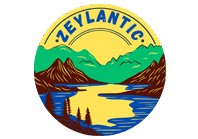
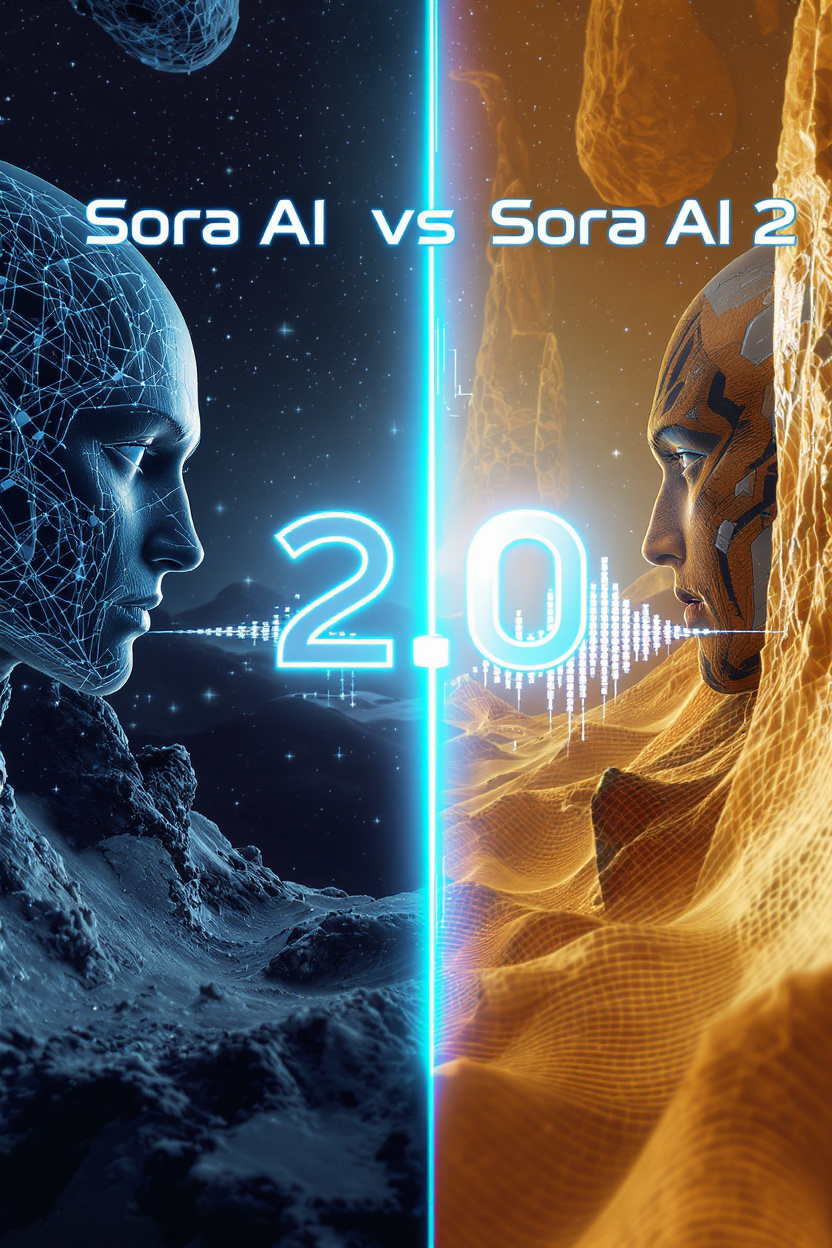
Leave a Reply